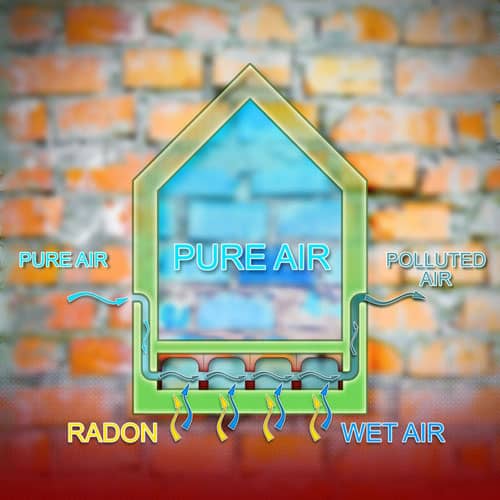Homes and businesses constructed using hollow cinder blocks can use that foundation to reduce indoor radon rates. The gas can be filtered through a block wall depressurization system that relies on the hollow foundation and air pressure to draw the substance outside.
What Is Block Wall Depressurization?

A block wall suction system is comprised of a fan and ductwork, both of which suction radon gas through the hollow cavities of cinder block walls. This mitigation strategy depends on maintaining a lower air pressure inside of the hollow cavity than exists in the basement, where piping and your suction point will be installed. The difference in air pressure should pull radon gas from the soil and remove it from the building before it can even enter.
One huge benefit of using a block wall depressurization system is that, unlike some of the other mitigation options, it both removes radon and prevents it from reentering the building later on.
Although block wall depressurization systems won’t work for every building, they’re an effective radon mitigation solution for those with the proper foundation. It’s also worth noting that installing this type of system will require contractors to seal all openings for it to properly function.
For many years, Nordic Radon Mitigation has served as the go-to radon contractor experts in the Fargo, ND area. If you would more information about block wall radon mitigation systems, contact Nordic Radon Mitigation today.


